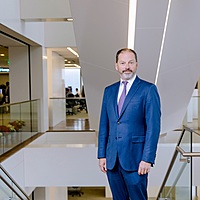Looking past the peak: Opportunities for Australian portfolios
Following the release of our June Cyclical Outlook, Adam Bowe and I held a livestreamed webcast for Australian clients to discuss the outlook for Australia’s growth, inflation and fiscal policy, and how investors can navigate the challenges and opportunities ahead. These are the highlights of that discussion.
Policy, growth and the pandemic: Are we past the peak?
The varied pace of vaccine rollouts and the threat of new COVID-19 variants have left the world temporarily desynchronised. For Australia, we believe we have passed the peak in two areas: fiscal policy and growth.
Meanwhile, ‘peak pandemic’ in Australia – that is, peak impact on economic conditions – will likely be reached in 3Q 2021, as the vaccination rollout gathers pace.
Ahead lies a delicate hand-off between policy-driven growth and organic growth – one which we think is going to be bumpier than most other developed countries. Economic reallocation takes time, long-term unemployment may pose problems, excess accumulated household savings may be partially retained, and global supply chains may take longer than expected to heal.
With Australia’s elongated pandemic, ongoing lockdowns and border controls, we think a return to a more sustainable growth outlook will be delayed to 2022 or even 2023. There will also be more long-term factors to navigate. For example, Australia’s largest services exports, education and tourism, could arguably be more permanently damaged because many other countries have already reopened. Coupled with a lower population growth rate, we believe the Australian economy’s potential growth rate will be permanently impacted. The rate for sustainable growth is likely to be closer to 2% for Australia post-pandemic, compared with around 3% before COVID struck. This will in turn lower the ‘new neutral’ policy rate for Australia going forward.
Inflation dummy, but longer-term risks remain
Our March Cyclical Outlook discussed an inflation “head fake”, a term we used to describe the transitory nature of the elevated levels of headline inflation we are seeing now. We believe that by the end of 2022, inflation will be close to central bank targets both in Australia and in the U.S. The factors driving the current inflation spike should be fairly short-lived, such as global supply chain constraints and logistical bottlenecks, which we expect to ease by the end of the year.
Extending our horizon out three to five years, we think that both upside and downside inflation risks have increased.
One area of focus for us is central banks and how they react to inflation. The U.S. Federal Reserve is being patient in the face of the current inflation spike, which is a testament to their flexible average inflation targeting framework and their aim to see inflation that averages 2% over time. The Reserve Bank of Australia (RBA) has indicated that it will not increase the official cash rate until actual inflation (rather than forecast inflation) is sustainably within its 2%–3% target range. We expect the result to be a delayed start to a hiking cycle and a gradual approach towards neutral.
Refocusing on the cash rate
Since the pandemic began, the RBA has had four main levers to help support the economy: the cash rate; yield curve control, which aimed to help lower funding and borrowing costs for the next three years; the Term Funding Facility (TFF), which offered three-year low cost funding to authorised deposit-taking institutions; and quantitative easing (QE) – the government’s bond buying programme. However, the TFF expired in June, 3-year yield curve control will wind down as the target April 2024 bond approaches maturity, and the QE programme will begin to taper later this year. Going forward, the market will have to refocus its attention on a single policy tool again – the cash rate.
In our view, the nominal neutral cash rate is 2%–3% in Australia given the RBA’s inflation target of 2.5%. This is similar to, or perhaps modestly above, other developed countries such as the U.S., which adds to the argument that central banks can afford to be patient. The RBA does not have to lift rates back to 5% this cycle; it can start a little later and go a little slower.
We expect the RBA to be in a position to begin a gradual hiking cycle in 2023 – consistent with our expectations for other developed market central banks.
Opportunities for fixed income investors
With an uncertain outlook and many assets fully-priced, is important to be patient, liquid and flexible in terms of portfolio construction. But we still see opportunities for active investors:
- We continue to target the 5- to 7-year portion of most yield curves as we believe inflation will be transitory, and roll down and carry can be significant return generators.
- We retain a preference for COVID-impacted credit sectors, such as lodging, leisure, airlines, airports, and gaming, but also sectors like universities in Australian portfolios.
- We favour housing-related credits in most parts of the world – higher house prices are strongly supportive of older vintage and seasoned residential mortgage-backed securities.
- We see developing opportunities in semi-government bonds given recent spread widening. This reflects the expected tapering of the RBA’s QE programme plus the costs associated with lockdowns, which will increase the net supply of semi-government bonds in the future.
We believe that this transitional phase will bring plenty of challenges and elevated volatility – the best friend of active managers.
For insights into our outlook for the global economy in the year ahead and the investment implications, please read our latest Cyclical Outlook, “Inflation Inflection.”
Learn more via Livewire's new Fund Profiles
For investors interested in funds that offer risk factor diversification and take advantage of multi-sector credit opportunities, discover the PIMCO Income Fund and PIMCO Diversified Fixed Interest Fund Profiles.


2 funds mentioned
1 contributor mentioned

